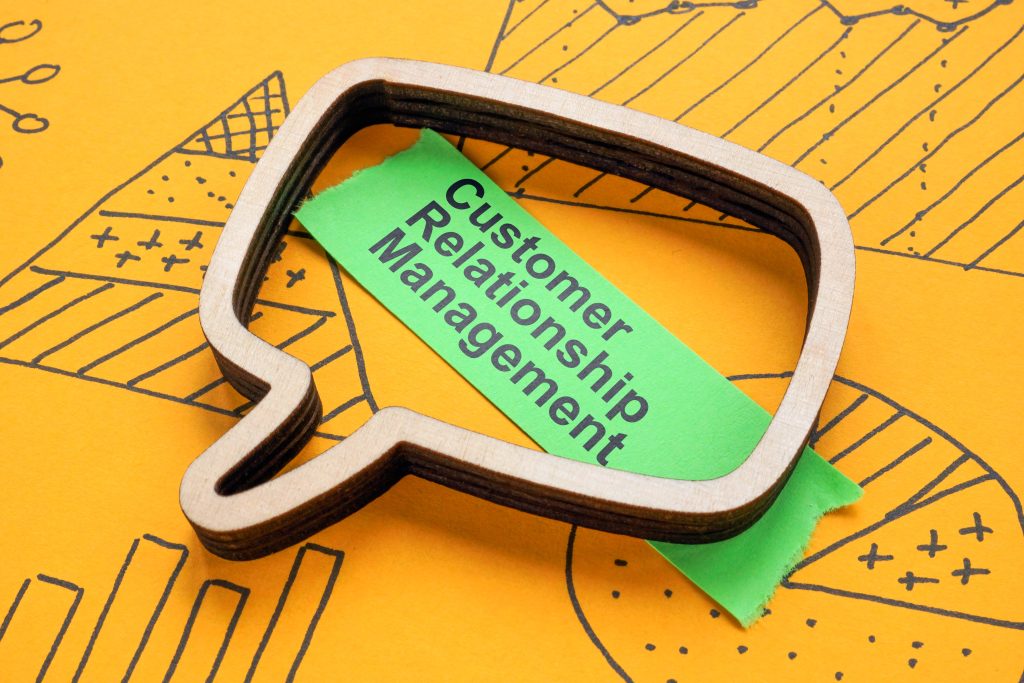This guide will explore creative and effective birthday promotions that you can offer to show appreciation for your loyal customers. Birthdays are a special time for individuals, and by acknowledging and celebrating this milestone with your customers, you can strengthen the bond and loyalty they have towards your business. By implementing thoughtful birthday promotions, you can not only make your customers feel valued but also drive sales and increase customer retention. Read on to discover a variety of birthday promotion ideas that will leave a lasting impact on your customers and your business.
Types of Birthday Promotions
While celebrating your customers’ birthdays, there are various types of promotions you can offer to show your appreciation. Here are some popular options that you can consider:
- Discount Offers
- Free Gifts
- Exclusive Access to Products or Events
- Loyalty Points Bonuses
- Birthday-Themed Contests
Discount Offers
For customers celebrating their birthday, you can offer special discount offers on their purchases as a birthday treat. This can be a percentage off their total purchase, a buy-one-get-one-free deal, or a specific dollar amount discount.
Free Gifts
Discounting some or all of your products or services for a customer’s birthday is a great way to make them feel special and increase their loyalty to your brand. You can offer free gifts with purchases over a certain amount or provide a complimentary service as a birthday gift.
This type of promotion can help customers feel appreciated and valued, encouraging them to continue shopping with your brand. It also adds an element of surprise and delight to their birthday experience.
Exclusive Access to Products or Events
The opportunity to access exclusive products or events can make customers feel like VIPs on their special day. By offering limited edition products or invitation-only events, you can create a sense of exclusivity and excitement around their birthday celebration.
For instance, you could offer early access to a new product launch or invite them to an exclusive birthday party at your store. This type of promotion can build a stronger emotional connection with your customers and enhance their overall birthday experience.
Loyalty Points Bonuses
Points can be awarded as a birthday bonus to loyal customers who are part of your loyalty program. These bonus points can be redeemed for discounts, free products, or other rewards, incentivizing customers to continue engaging with your brand beyond their birthday.
Promotions like this can help increase customer retention and encourage repeat purchases, as customers have an added incentive to shop with your brand. It also reinforces the idea that you value their loyalty and want to reward them for their continued support.
Birthday-Themed Contests
Some businesses opt to run birthday-themed contests as part of their birthday promotions. This could include photo contests where customers share their birthday celebrations with your products, or creative challenges related to birthdays.
Products or discounts can be offered as prizes for winners, adding an element of fun and engagement to the birthday celebration. Contests like these can generate buzz around your brand and encourage customers to interact with your business in a creative and exciting way.
Tips for Crafting Memorable Birthday Promotions
Little gestures can go a long way in making your customers feel valued and appreciated, especially on their special day. When crafting birthday promotions, it’s necessary to have a strategy in place that not only drives sales but also fosters a deeper connection with your loyal customers.
Personalization Strategies
While personalization is key in creating memorable birthday promotions, it is also crucial in establishing a genuine connection with your customers. By capturing and analyzing relevant data such as purchase history and preferences, you can tailor your promotions to suit the individual tastes of each customer.
Timing and Communication
An effective birthday promotion strategy involves not only the timing of when you send out offers but also the mode of communication. Consider sending personalized emails or SMS messages a few days before their birthday to build anticipation and remind them of your special offer.
Strategies such as setting up automated birthday emails can help streamline the process and ensure that no customer is overlooked.
Integrating With Existing Loyalty Programs
Birthday promotions can be seamlessly integrated into your existing loyalty programs to provide added incentives for customers to engage with your brand. By linking birthday rewards with loyalty points or exclusive benefits, you can encourage repeat visits and increased customer retention.
Loyalty program members are more likely to feel valued and appreciated, fostering a sense of loyalty and affinity towards your brand.
Leveraging Social Media
Leveraging social media platforms to promote your birthday promotions can help reach a wider audience and generate excitement around your brand. Encourage customers to share their birthday rewards on social media platforms, creating buzz and drawing in new customers through word-of-mouth marketing.
Understanding your target audience and the social media channels they prefer can help tailor your promotions effectively and maximize engagement.

Step-by-Step Guide to Implementing Birthday Promotions
Collecting Customer Birthdate Information
You can start collecting customer birthdate information by implementing a simple sign-up form on your website or at your physical store. Make it easy for customers to share their birthdate by offering a small incentive or discount in exchange.
Creating a Promotion Calendar
Even a basic spreadsheet can serve as a powerful tool for creating a promotion calendar. List out all the birthdays of your customers, plan your promotions, and schedule them throughout the year. Be sure to include special promotions for milestone birthdays to make them feel extra special.
Collecting a customer’s birthdate is a crucial step in personalizing their experience and showing your appreciation for their loyalty. By knowing their birthdate, you can send targeted promotions and offers that are more likely to resonate with them.
Setting Up Tracking and Analytics
You can set up tracking and analytics by using tools like Google Analytics or customer relationship management (CRM) software to monitor the effectiveness of your birthday promotions. Track metrics such as open rates, click-through rates, and redemption rates to understand what resonates best with your customers.
Guide your staff on how to identify customers celebrating their birthdays and how to deliver a memorable experience. Make sure they are well-versed in the promotions you are offering and have the necessary resources to execute them smoothly.
Ensuring Staff Readiness and Training
Implementing a training program for your staff ensures they are well-prepared to execute birthday promotions effectively. Provide them with guidelines on how to handle customer inquiries, how to redeem birthday offers, and how to create a personalized experience for each customer.
Step-by-step, follow this guide to implement birthday promotions that will delight your customers and strengthen their loyalty to your brand. By collecting customer birthdate information, creating a promotion calendar, setting up tracking and analytics, and ensuring staff readiness and training, you can create a rewarding birthday promotion strategy that keeps your customers coming back for more.
Factors to Consider When Offering Birthday Promotions
Many factors should be taken into account when deciding to offer birthday promotions to your loyal customers. It is important to carefully consider the following:
- Budget Constraints
- Brand Alignment
- Demographic Considerations
- Legal and Ethical Considerations
Budget Constraints
With any promotional offer, it is crucial to set a budget and stick to it. Make sure the birthday promotions you offer are sustainable and won’t cut into your profit margins.
Brand Alignment
On the topic of brand alignment, it is important to ensure that the promotions you offer align with your brand’s image and values. Any birthday promotion should be in line with your brand’s messaging and positioning in the market.
Consider how the promotion will reflect on your brand and whether it will resonate with your target audience.
Demographic Considerations
Clearly defining your target demographic is important when offering birthday promotions. Consider the age, gender, interests, and spending habits of your loyal customers to tailor promotions that will be most appealing to them.
Alignment with your target demographic ensures that your birthday promotions will be well-received and effective in driving customer engagement and loyalty.
Legal and Ethical Considerations
Demographic data collection for birthday promotions must comply with legal and ethical standards. It is important to respect customers’ privacy and adhere to data protection regulations when gathering personal information for promotional purposes.
For instance, obtaining explicit consent for data collection and ensuring secure storage and handling of customer information are crucial aspects to consider when offering birthday promotions.
Advantages
- Increased customer loyalty
- Enhanced customer experience
- Word-of-mouth promotion
- Opportunity to upsell
- Data collection for targeted marketing
Disadvantages
- Potential for over-promotion
- Decreased profit margins
- Managing logistics of promotions
- Risk of cannibalizing regular sales
- Customer expectation of discounts
Advantages for Customer Loyalty
For businesses, offering birthday promotions can be an effective strategy to increase customer loyalty. By showing appreciation for customers on their special day, you can strengthen the bond between them and your brand, leading to repeat business and positive word-of-mouth referrals.
Risks of Over-Promotion
You need to be cautious about over-promoting birthday offers to avoid diminishing their value. Showering customers with discounts and freebies too frequently may lead to decreased profit margins and a sense of entitlement among customers, affecting their overall perception of your brand.
The
Measuring Return on Investment
With proper tracking mechanisms in place, you can assess the effectiveness of birthday promotions in driving sales and customer engagement. By analyzing data such as redemption rates and average spend during the promotion period, you can determine the return on investment and make informed decisions for future campaigns.
With
Measuring Return on Investment
It’s important to consider not just the immediate impact of birthday promotions but also their long-term effects on customer retention and overall brand loyalty. By calculating the lifetime value of customers acquired through birthday promotions, you can gauge their true worth to your business.
Balancing Exclusivity and Inclusivity
Nowadays, finding the right balance between offering exclusive birthday perks to loyal customers and including all customers in celebratory promotions is crucial. By segmenting your customer base and tailoring offers accordingly, you can strike a balance that rewards loyalty while attracting new customers.
Customer satisfaction should always be at the forefront of your birthday promotion strategy. By understanding the pros and cons associated with such promotions, you can make well-informed decisions that benefit both your customers and your business in the long run.
Summing up
Ultimately, offering birthday promotions to reward your loyal customers is a great way to show appreciation and build stronger relationships. By tailor-making special offers, discounts, or exclusive gifts, you can make your customers feel valued and encourage them to continue choosing your brand. Whether it’s a personalized birthday discount, a free gift, or a special experience, these promotions can help enhance customer loyalty and create a positive image of your business. Recall, the key is to make the customer feel special on their special day, and you will see the benefits in customer satisfaction and loyalty in return.
















